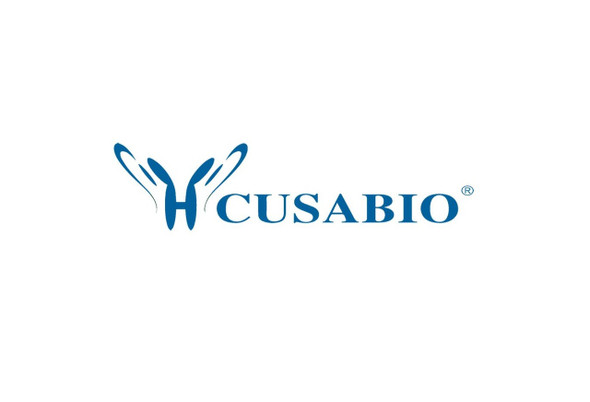Cusabio Human Recombinants
Recombinant Human Calcium-activated potassium channel subunit alpha-1 (KCNMA1), partial | CSB-EP614255HU
- SKU:
- CSB-EP614255HU
- Availability:
- 3 - 7 Working Days
Description
Recombinant Human Calcium-activated potassium channel subunit alpha-1 (KCNMA1), partial | CSB-EP614255HU | Cusabio
Alternative Name(s): BK channel (BKCA alpha) (Calcium-activated potassium channel, subfamily M subunit alpha-1) (K(VCA)alpha) (KCa1.1) (Maxi K channel) (MaxiK) (Slo-alpha) (Slo1) (Slowpoke homolog) (Slo homolog) (hSlo) (KCNMA) (SLO)
Gene Names: KCNMA1
Research Areas: Cancer
Organism: Homo sapiens (Human)
AA Sequence: VVCGHITLESVSNFLKDFLHKDRDDVNVEIVFLHNISPNLELEALFKRHFTQVEFYQGSVLNPHDLARVKIESADACLILANKYCADPDAEDASNIMRVISIKNYHPKIRIITQMLQYHNKAHLLNIPSWNWKEGDDAICLAELKLGFIA
Source: E.coli
Tag Info: C-terminal 6xHis-HPC4-tagged
Expression Region: 411-560aa
Sequence Info: Partial
MW: 20.0 kDa
Purity: Greater than 85% as determined by SDS-PAGE.
Relevance: Potassium channel activated by both membrane depolarization or increase in cytosolic Ca2+ that mediates export of K+. It is also activated by the concentration of cytosolic Mg2+. Its activation dampens the excitatory events that elevate the cytosolic Ca2+ concentration and/or depolarize the cell membrane. It therefore contributes to repolarization of the membrane potential. Plays a key role in controlling excitability in a number of systems, such as regulation of the contraction of smooth muscle, the tuning of hair cells in the cochlea, regulation of transmitter release, and innate immunity. In smooth muscles, its activation by high level of Ca2+, caused by ryanodine receptors in the sarcoplasmic reticulum, regulates the membrane potential. In cochlea cells, its number and kinetic properties partly determine the characteristic frequency of each hair cell and thereby helps to establish a tonotopic map. Kinetics of KCNMA1 channels are determined by alternative splicing, phosphorylation status and its combination with modulating beta subunits. Highly sensitive to both iberiotoxin and charybdotoxin.
Reference: "Cloning, expression, and distribution of functionally distinct Ca(2+)-activated K+ channel isoforms from human brain." Tseng-Crank J., Foster C.D., Krause J.D., Mertz R., Godinot N., DiChiara T.J., Reinhart P.H. Neuron 13:1315-1330(1994)
Storage: The shelf life is related to many factors, storage state, buffer ingredients, storage temperature and the stability of the protein itself. Generally, the shelf life of liquid form is 6 months at -20?/-80?. The shelf life of lyophilized form is 12 months at -20?/-80?.
Notes: Repeated freezing and thawing is not recommended. Store working aliquots at 4? for up to one week.
Function: Potassium channel activated by both membrane depolarization or increase in cytosolic Ca(2+) that mediates export of K(+). It is also activated by the concentration of cytosolic Mg(2+). Its activation dampens the excitatory events that elevate the cytosolic Ca(2+) concentration and/or depolarize the cell membrane. It therefore contributes to repolarization of the membrane potential. Plays a key role in controlling excitability in a number of systems, such as regulation of the contraction of smooth muscle, the tuning of hair cells in the cochlea, regulation of transmitter release, and innate immunity. In smooth muscles, its activation by high level of Ca(2+), caused by ryanodine receptors in the sarcoplasmic reticulum, regulates the membrane potential. In cochlea cells, its number and kinetic properties partly determine the characteristic frequency of each hair cell and thereby helps to establish a tonotopic map. Kinetics of KCNMA1 channels are determined by alternative splicing, phosphorylation status and its combination with modulating beta subunits. Highly sensitive to both iberiotoxin (IbTx) and charybdotoxin (CTX).
Involvement in disease: Paroxysmal nonkinesigenic dyskinesia, 3, with or without generalized epilepsy (PNKD3)
Subcellular Location: Cell membrane, Multi-pass membrane protein
Protein Families: Potassium channel family, Calcium-activated (TC 1.A.1.3) subfamily, KCa1.1/KCNMA1 sub-subfamily
Tissue Specificity: Widely expressed. Except in myocytes, it is almost ubiquitously expressed.
Paythway: Vascularsmoothmusclecontraction
Form: Liquid or Lyophilized powder
Buffer: If the delivery form is liquid, the default storage buffer is Tris/PBS-based buffer, 5%-50% glycerol. If the delivery form is lyophilized powder, the buffer before lyophilization is Tris/PBS-based buffer, 6% Trehalose, pH 8.0.
Reconstitution: We recommend that this vial be briefly centrifuged prior to opening to bring the contents to the bottom. Please reconstitute protein in deionized sterile water to a concentration of 0.1-1.0 mg/mL.We recommend to add 5-50% of glycerol (final concentration) and aliquot for long-term storage at -20?/-80?. Our default final concentration of glycerol is 50%. Customers could use it as reference.
Uniprot ID: Q12791
HGNC Database Link: HGNC
UniGene Database Link: UniGene
KEGG Database Link: KEGG
STRING Database Link: N/A
OMIM Database Link: OMIM









